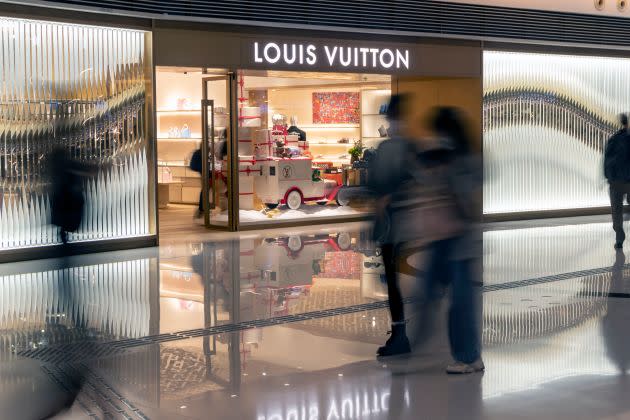Report: Chinese Luxury Market to See ‘Solid Double-digit Rebound’

The Chinese luxury market will grow at a midsingle-digit rate in 2024, according to a report from Bain & Company.
“Solid double-digit rebound is commendable,” said Bruno Lannes, a Shanghai-based senior partner at Bain. “But China’s luxury market has not fully recovered to its 2021 levels.”
More from WWD
“Uncertainties remain regarding the speed at which consumer confidence will resume and how overseas luxury shopping will evolve,” Lannes added.
Growth rates in China’s luxury market began to slow from the second half of last year, as consumers, especially the all-important middle class and high-income individuals, grappled with macroeconomic uncertainties.
China’s luxury market saw 12 percent year-over-year growth in 2023, recovering from the previous year’s decline, according to Bain.
In 2023, Chinese consumers accounted for around 22 to 24 percent of the world’s total, based on Bain estimates.
Growth in fashion goods, lifestyle and jewelry was around 15 to 20 percent; leather goods grew by 10 percent to 15 percent as consumers gravitated toward lower-price segments. Beauty rose around 8 percent, driven by fragrance and color cosmetics. Watches continued to lag other categories with a 5 to 10 percent rebound.
The Hainan duty-free market expanded 25 percent year-over-year in 2023 but has yet to return to its 2021 high, according to Bain.
“Interestingly, the average spending per shopper decreased by more than 25 percent, likely due to lower discount levels, fewer daigou activities, and an increased rationality among consumers,” Bain noted in the report.
According to the Bain report, offshore retail and the return of the professional daigou, or surrogate shopper, will be two trends driving growth in 2024.
Due to obvious price gaps, Chinese shoppers’ 2023 spending in Europe and Asia recovered to around 40 percent and 65 percent of 2019 levels, respectively, according to Bain.
For example, according to Bain’s examination of the “top three bestsellers from three to five leading luxury brands,” a 20 to 25 percent price gap exists for luxury bags costing more than 10,000 renminbi, or $1,412, between the European and mainland China markets.
For those unwilling to pay for overseas travels, daigous that exist on authenticated platforms and work with certified overseas wholesalers are filling in the gap.
According to data from Re-Hub, which was cited by Bain, daigou prices can be up to 40 percent lower than the brand’s prices in mainland China.
For brands that have not tightly controlled their wholesale channels, fashion and leather goods daigou sales can account for 60 to 70 percent of total mainland China sales, Re-Hub said.
Some of the daigou platforms that Re-Hub tracks have experienced double-digit gross merchandise value growth per year, including in 2023.
With daigous on the move again, Bain said that brands must continue to tightly manage wholesale accounts overseas and implement harmonized global pricing strategies to maintain consumption in the mainland market.
Excluding daigou sales, the mainland luxury market accounted for around 16 percent of global luxury sales, and that number is expected to reach 24 to 26 percent by 2030.
Best of WWD

